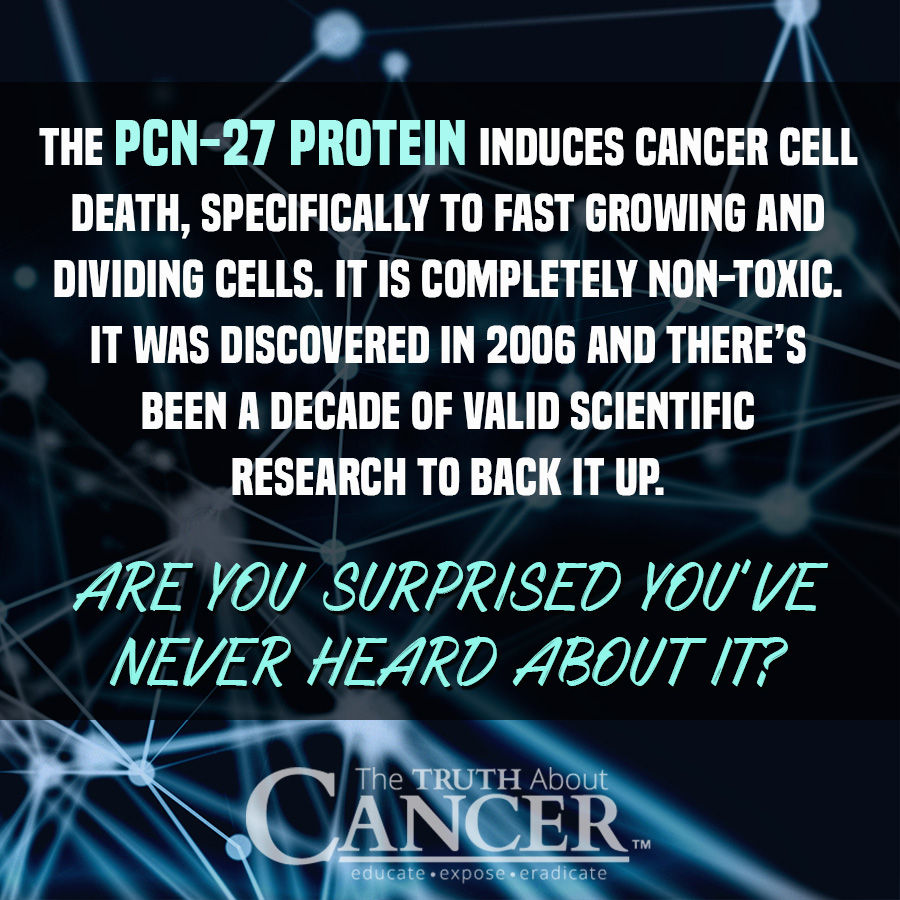For decades, sensational headlines have teased us with claims of miraculous cancer cures, only for them to fade into obscurity as mere PR stunts. But every so often, a treatment emerges that shows true potential, backed by a growing body of research and real-world results. PNC-27, a protein discovered over a decade ago, is one such treatment. It has continued to demonstrate remarkable efficacy against various cancers, earning its place as a promising therapy that deserves our attention.
The Promise of PNC-27: A Protein on the Frontlines
One such promising treatment (or cancer therapy) is a protein named PNC-27 that has managed to fly under the radar since its inception around 2006. While accruing a vast library of medical research in its favor, PNC-27 has proven itself as an effective cancer therapy when included in certain anticancer regimens.
The protein, linked by peptide bonds, has shown effectiveness in selectively targeting a broad range of cancers including melanoma, leukemia, pancreatic, breast, and other cancer cell lines.
This non-toxic cancer treatment causes cell death, specifically to fast growing and dividing cells, while leaving all others completely unharmed. To accomplish this, the PNC-27 protein attaches to the membranes of cancerous cells creating holes in them. These membrane holes cause rapid implosion and subsequent cancer cell death due to the osmotic pressure difference from the inside to the outside of the cells.
Cancerous cells possess within their cell membrane a protein called HDM-2. Once introduced internally, the PNC-27 protein travels directly to the HDM-2 protein within the cancer cell membrane. It then rapidly begins forming pores which starts what is known as membrane lysis, or death of the cancer cell’s membrane.
The U.S. Barrier: Why Americans Still Haven’t Heard About PNC-27
Despite these promising results, PNC-27 remains largely unknown in the United States, primarily due to political and economic factors. The pharmaceutical industry’s stronghold on cancer treatment options has made it difficult for alternative therapies like PNC-27 to gain traction. This is particularly frustrating given the protein’s proven efficacy and the urgent need for more effective, less harmful cancer treatments.
A Decade of Promising Research
To fully appreciate the effectiveness at which this treatment has been clinically proven, it is helpful to look at some key research from the past decade.
Laboratory research began to look at targeted cancer therapies using proteins from the HDM-2 binding site in 2006. Although PNC-27 had not been discovered yet, the 2006 study of the protein and peptide sequence, later called PNC-27, reported the following:
Surprisingly, we have found that these peptides induce 100 percent tumor cell necrosis, not apoptosis, in 13 different human cancer cell lines but have no effect on normal pancreatic acinar cells, breast epithelial cells, and human stem cells.
A study in The Annals of Clinical and Laboratory Science from the summer of 2014 looked at the effectiveness of PNC-27 against human leukemia cell lines (K562) and concluded:
PNC-27 is selectively cytotoxic to K562 cells, inducing nearly 100 percent cell killing…
A 2010 study in the Journal of Chemotherapy and Pharmacology looked at PNC-27’s effect on breast cancer cells and concluded the following:
PNC-27 induces cancer cell membrane lysis… (Note: lysis refers to breaking down the cell membrane)
PNC-27’s effectiveness is further backed-up by several patents throughout its discovery. There is even a TEDx presentation covering PNC-27’s mechanisms titled Targeted Cancer Therapy given by Dr. Ehsan Yazdi.
Is PNC-27 Better Than Radiation & Chemo?
The advantages that PNC-27 has over conventional chemotherapy and radiation therapy are as follows:
- Highly selective damage to only rapid dividing, cancerous cells
- Has its own built-in delivery mechanism
- Highly unique and effective method to kill cancer cells
- Has no effect on other bodily systems (immune, digestive, respiratory, etc.)
The Failure of The War on Cancer
President Nixon declared a war on cancer in 1971 with his signing of The National Cancer Act. This war has been all but lost as the world is still facing major casualties. Too often have researchers and individuals sought a “cure-all magic bullet.”
Personal responsibility and lifestyle choices appear to be the closest reality to a true “cure” that will ever come. PNC-27 and other targeted, non-toxic therapies are indeed game changers to assist an individual out of a health crisis.
Since cancer is a symptom of an underlying imbalance, a person’s entire lifestyle and diet choices must change no matter what therapy is used to assist the body in eliminating cancer. Even with cancer remission, the underlying root cause(s) must be addressed.
No single therapy can replace a proper detoxification regimen, the correct diet to rebuild the body, reducing stress, getting adequate restorative sleep, and other lifestyle choices that amplify the body’s healing environment. Oftentimes individuals who do not make the proper changes will experience a cancer relapse whether they used chemotherapy, radiation, or the best alternative therapies in the world.
The question is… Are you willing to take charge of your own personal cancer education and make the necessary changes?
Editor’s Note: This article originally published Sept 2015 and was updated and republished August 2024
Article Summary
There have been many headlines of new cancer “cures” which have proven false. However, it’s important to pay attention to cancer therapies that continue to demonstrate effectiveness. One of these modalities in PNC-27.
This non-toxic cancer treatment causes cell death, specifically to fast growing and dividing cells, while leaving other cells unharmed.
While PNC-27 cancer treatment has shown major promise in studies, it has been unable to gain footing as a treatment within the United States.
PNC-27 has a number of advantages over conventional chemotherapy and radiation treatments.
Cancer is a symptom of an underlying imbalance. No matter what treatment is used, the underlying root cause(s) of the cancer must be addressed.






















